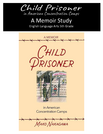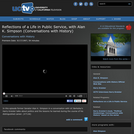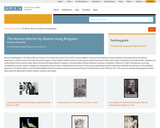
This unit explores the memoir and writing memoirs using only six words.
- Subject:
- Composition and Rhetoric
- Material Type:
- Homework/Assignment
- Lesson Plan
- Author:
- Sharel Diaz
- Date Added:
- 07/08/2023

This unit explores the memoir and writing memoirs using only six words.

What is a “life” when it’s written down? How does memory inform the present? Why are autobiographies and memoirs so popular? This course will address these questions among others, considering the relationship between biography, autobiography, and memoir and between personal and social themes. We will examine classic authors such as Mary Rowlandson, Benjamin Franklin, Frederick Douglass, Harriet Jacobs, and Mark Twain; then more recent examples like Tobias Wolff, Art Spiegelman, Sherman Alexie, Shirley Geok-lin Lim, Edwidge Danticat, and Alison Bechdel.

This course explores the experiences and understandings of class among Americans positioned at different points along the U.S. social spectrum. It considers a variety of classic frameworks for analyzing social class and uses memoirs, novels, and ethnographies to gain a sense of how class is experienced in daily life and how it intersects with other forms of social difference such as race and gender.

Japanese American Memorial Pilgrimages has developed lessons, supplemental resources, and educational documentary videos to accompany the memoir Child Prisoner in American Concentration Camps by Mako Nakagawa.

In this episode former Senator Alan K. Simpson in a conversation with UC BerkeleyŐs Harry Kreisler talks about politics and the lessons he learned during the course of his distinguished career. (54 min)

This course explores the city through writing—listening to the voices of poets, short story writers, novelists, journalists, critics, historians, ethnographers, urbanists, musicians, filmmakers, and visual artists. Through extensive reading that informs their work on a longform story, students will join the chorus of storytellers to richly represent the variegated city. Our focus is on three nonfiction forms—essay, memoir, literary narrative—with special emphasis on the writer-editor relationship and on revision as a heuristic to better thinking.

This subject is designed to give 21H majors and minors an introduction to the methods that historians use to interpret the past. We will focus on two areas: archives and interpretation. In our work on archives, we will ask what constitutes an archive. We will visit one or two local archives, speak with archivists, and assemble our own archive related to life at MIT in 2003. Once we have a better understanding of the possibilities and limitations of historical archives, we will turn to the task of interpreting archival findings. We will discuss a series of readings organized around the theme of history and national identity in various parts of the world since the end of the eighteenth century.

This collection uses primary sources to explore Maxine Hong Kingston's The Woman Warrior. Digital Public Library of America Primary Source Sets are designed to help students develop their critical thinking skills and draw diverse material from libraries, archives, and museums across the United States. Each set includes an overview, ten to fifteen primary sources, links to related resources, and a teaching guide. These sets were created and reviewed by the teachers on the DPLA's Education Advisory Committee.

Third revision, August 2017.
Welcome to Writing Unleashed, designed for use as a textbook in first-year college composition programs, written as an extremely brief guide for students, jam-packed with teachers’ voices, students’ voices, and engineered for fun.
This textbook was created by Dana Anderson, Ronda Marman, and Sybil Priebe - all first-year college composition instructors at the North Dakota State College of Science in Wahpeton, ND.
Download here: https://drive.google.com/open?id=1JoX94RjwS-WoPnGCyIZ9ZTQeX74iG9hS